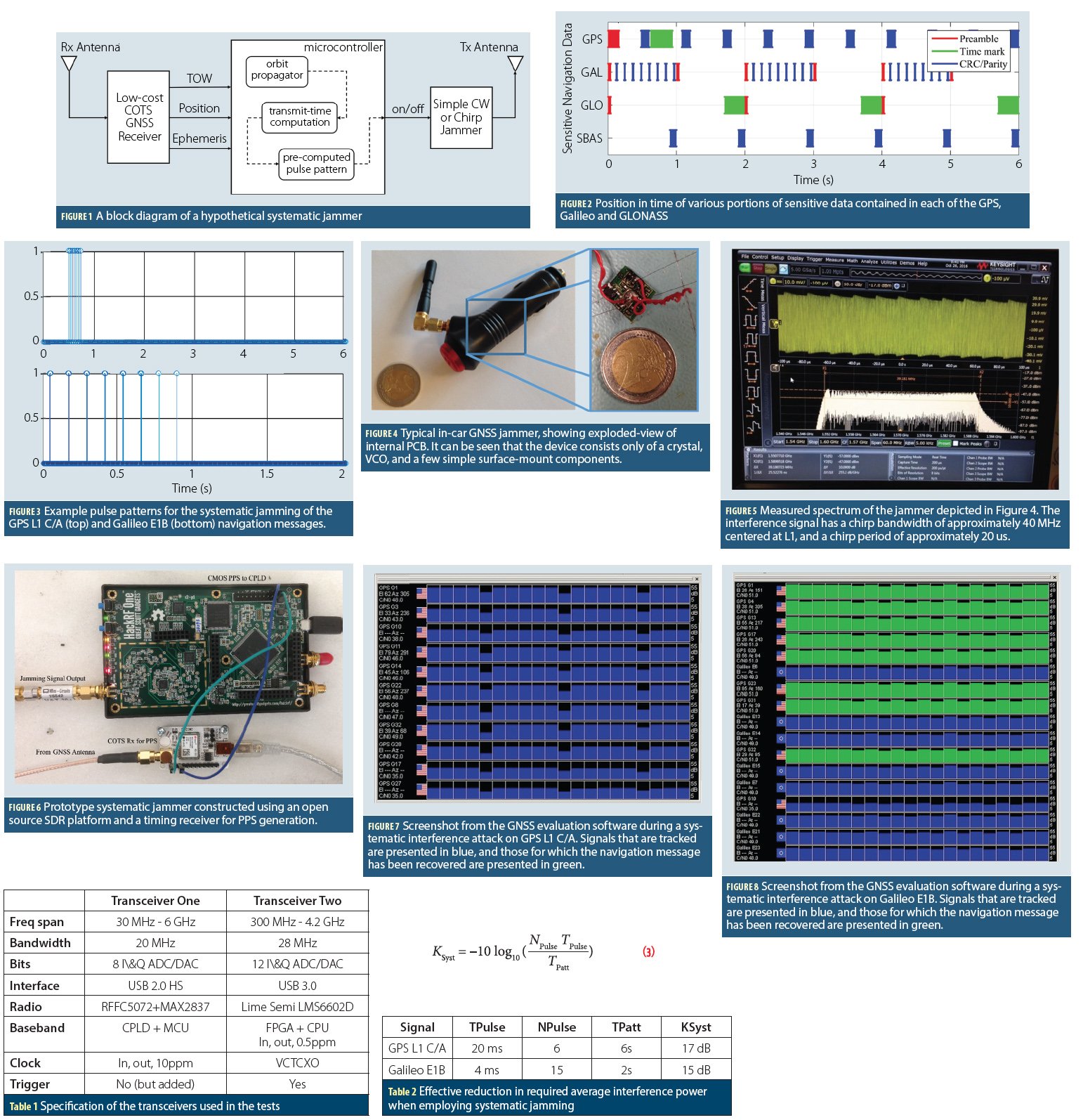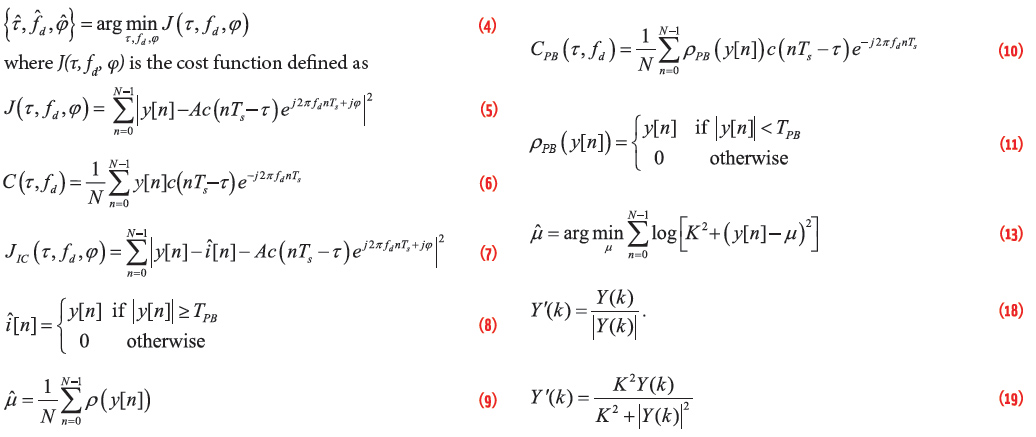Do modern multi-frequency civil receivers eliminate the ionospheric effect?
 Figures 1 – 10
Figures 1 – 10Q: Do modern multi-frequency civil receivers eliminate the ionospheric effect?
By Mark Petovello Figures 1 – 10
Figures 1 – 10Q: Do modern multi-frequency civil receivers eliminate the ionospheric effect?
By Mark Petovello Figures 1 – 6, Table 1
Figures 1 – 6, Table 1There are many good reasons for getting excited about highly automated vehicles, or HAVs, which is the acronym used by the National Highway Traffic Safety Administration (NHTSA). HAVs can make driving more fuel- and time-efficient. They can significantly reduce traffic congestion and emissions by driving a precise speed, minimizing lane changes, and maintaining an exact distance to neighboring cars. They can also increase accessibility and mobility for disabled and elderly persons.
By Inside GNSSToday’s headlines frame my thoughts about securing GNSS assets, which one expert has characterized as our “least visible and most vulnerable infrastructure.”
By Inside GNSS
Q: How do you use GNSS to compute the attitude of an object?
By Inside GNSS Equations
EquationsGNSS is the technology of choice in most applications due to its dedicated infrastructure, Earth coverage, medium to high accuracy, and large market penetration. Most of the applications, including those we download on our smartphones, are in the category of Location Based Services (LBS). However, there are many other services and businesses that rely heavily on GNSS performance and reliability. For instance, Intelligent Transportation Systems (ITS) make extensive use of GNSS technology and this dependence will only grow in the future.
By Inside GNSS Figures 1 – 8, Tables 1 & 2, Equation 3
Figures 1 – 8, Tables 1 & 2, Equation 3The vulnerability of GNSS to various forms of malicious interference have been widely discussed in recent years, and have considered a wide range of both real and potential attacks. Some of these have included extensive studies of commercially available jamming devices, while others have considered the more comprehensive case of spoofing, where the interference takes the form of genuine GNSS signals (For details, see papers listed in Additional Resources, including M. G. Amin et alia).
By Inside GNSS Bernhard Richter, Leica Geosystems GNSS business director
Bernhard Richter, Leica Geosystems GNSS business director Enrico Salvatori, Qualcomm Europe
Enrico Salvatori, Qualcomm Europe Carlo Bagnoli, STMicroelectronics
Carlo Bagnoli, STMicroelectronicsCarlo Bagnoli is Director of Infotainment BU System and Applications at STMicroelectronics. The company is a global semiconductor leader focusing on smart driving and the internet of things, creating intelligent and energy-efficient products that enable intelligent transport as well as smarter factories, cities and homes.
Within the infotainment business unit, Bagnoli and his team work to develop positioning receivers, broadcast receivers and communication processors for the automotive market. Doing so means gathering GNSS signals from far and wide.
By Inside GNSS Equations 1 – 7
Equations 1 – 7Working Papers explore the technical and scientific themes that underpin GNSS programs and applications. This regular column is coordinated by Prof. Dr.-Ing. Günter Hein, head of Europe’s Galileo Operations and Evolution.
By Günter W. Hein Equations
EquationsIncorporation of real-time synchronized phasor measurements in the control of power grids can play an important role in maintaining the overall closed-loop stability of the power system. In the past, instability in the power grid caused disturbances ranging from small local perturbations to severe large scale blackouts as can be seen from Figure 1. Currently, the synchronization achieved in measurements collected using devices known as supervisory control and data acquisition (SCADA) is not robust enough for efficient monitoring the power grid.
By Inside GNSS
As described in the November-December issue of Inside GNSS, “Interference Localization from Space,” radio frequency interference causes the satellite industry to lose millions of dollars per year due to detrimental effects, ranging from a degradation in the quality of service to the complete loss of service.
By Inside GNSSChina’s development and promotion of its BeiDou satellite navigation system not only has tremendous implications for that country’s government and finances, but this alternative to GPS also presents a variety of implications for the United States, according to a staff research report released by the U.S.-China Economic and Security Review Commission.
By Inside GNSS